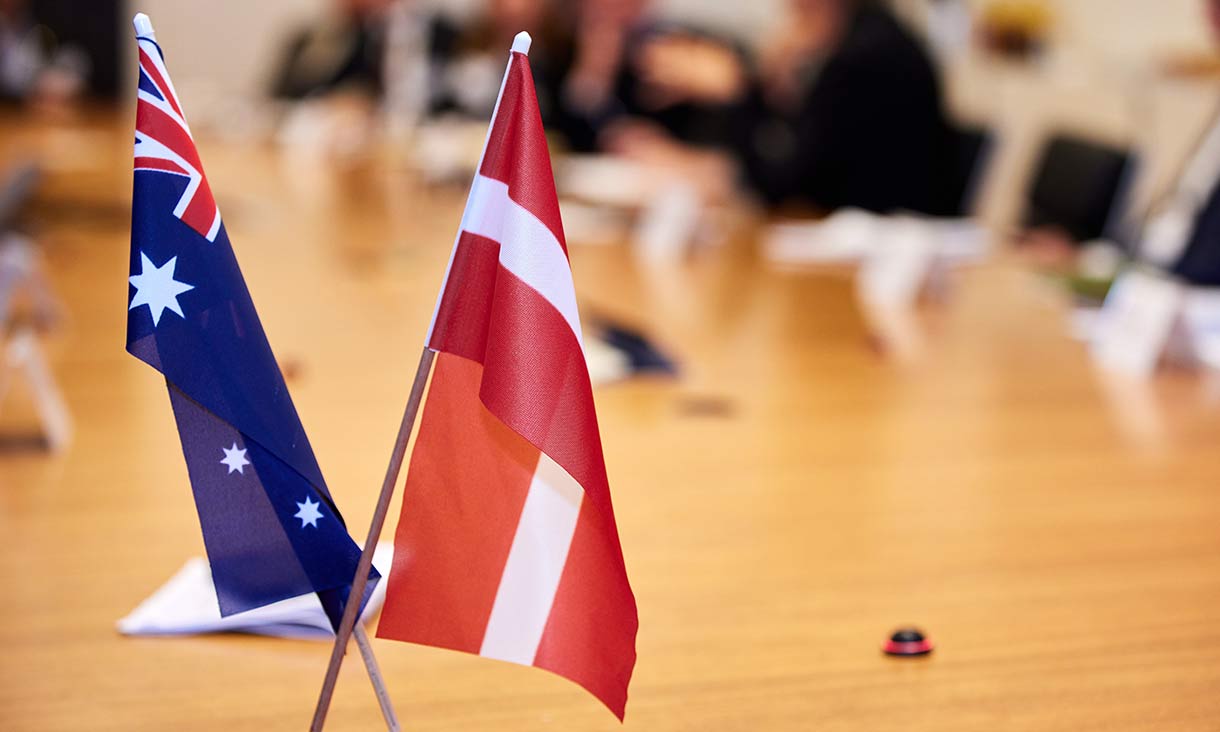
Australia’s trade and the threat of autonomous uncrewed underwater vehicles
To better understand UUV technology and the risks that weaponised UUVs may pose to Australia's economy and security, RMIT and its research partners undertook an analysis examining the likelihood, impact, and mitigation steps related to autonomous submersible weapon systems scenarios.
Uncrewed, underwater vehicles (UUVs) are underwater vehicles – either remote-controlled or automated – that operate without a human occupant. UUV has civilian uses, including deep sea exploration, research and filming, and the monitoring and rehabilitation of wetlands and waterways.
UUVs also has military applications, including the detection and clearing of underwater mines, data collection and reconnaissance, and the potential for submarine warfare.
UUVs are expected to play increasingly critical roles in both peace time and in future conflicts. Their use will affect both maritime trade and the security of nations, and the risks to trade, supply chains, maritime networks need to be assessed and mitigated for Australia's economic and sovereign security.
Background
To better understand UUV technology and the risks that weaponised UUVs may pose to Australia's economy and security, RMIT and its research partners undertook an analysis examining the likelihood, impact, and mitigation steps related to autonomous submersible weapon systems scenarios.
The research
RMIT's Centre for Cyber Security Research and Innovation (CCSRI) developed a series of consultations and workshops designed to explore and examine the likelihood of UUVs being used as autonomous submersible weapon systems, the impact such use might have on Australia's economy and security, and what steps might be taken to mitigate the risks.
For the impact analysis, five separate scenarios were developed. The scenarios were based on a review of UUV-related literature and with input from key industrial and legal experts. They also included key considerations relating to issues such as the rise of Artificial Intelligence (AI) in UUV design; developing greater resiliency into critical undersea infrastructure and ocean-borne trade; and new strategies aimed at developing next-generation technologies for underwater maritime defence.
Over 50 stakeholders took part, representing expertise in a range of areas across policy and strategy, technology, and operational perspectives. They included representatives from the government public service, the Department of Defence, the Royal Australian Navy (RAN), defence industry and researchers to generate insights into current UUV development, vulnerabilities in Australian critical maritime infrastructure, and risk management practices.
The scenarios examined were
- How will coordinated attacks by UUVs impact Australian maritime trade and critical underwater infrastructure?
- What cyber capabilities do UUVs possess? What potential effects could these have on Australia’s maritime trade and critical infrastructure?
- Do UUVs pose a threat to Australian shipping routes and ports?
- How will the attributes of UUVs evolve?
- What would be the repercussions if a country (such as a foreign adversary) with a base in the Solomon Islands deployed UUVs from that base?
The workshops provided insights from a range of perspectives and resulted in a number of recommendations for meeting the challenges that were highlighted during the research.
- Clarify legal parameters for UUV deployment.
Defence should consult with internal stakeholders to ensure that the definitions of “defence vessel” and “naval vessel” are not restrictive - Undertake rapid implementation of a Whole-of-Government Fuel Council
Current strategic fuel reserves remain a critical flaw in Australia’s trade and national defence. - Incorporate UUV operations and AI-enabled infrastructure in maritime security strategy.
A robust maritime security strategy is needed to prevent, deter, and respond to UUV coordinated attacks. - Strengthen regulations and export controls.
The government should strengthen regulations and export controls on UUV technologies to prevent their acquisition by non-state actors and criminals. - Develop redundancies in satellite systems and more submersible cables.
Securing global communication links requires moving from a reliance on 1-2 underwater cables towards building multiple redundancies into satellite systems and more cables. - Enhance surveillance and monitoring capabilities.
The government should enhance its surveillance and monitoring capabilities to detect and track UUVs in Australian waters. - Build partnerships with industry and research institutions.
Increase government investment in and build partnerships with industry and research institutions, to develop and enhance Australia’s ability to detect and respond to UUV coordinated attacks. - Establish long-range preventive measures to militate against future UUV scenarios.
Invest in stronger diplomatic initiatives with close neighbours, establish military bases, or collaborate with other countries to screen potential risks before they become a threat. - Encourage UUV designs with safety in mind, and also counter-operations.
In the design process, consider transparency for operational reasons as well as factors such as assigning the most appropriate UUVs to the mission at hand;
Funding and institutional support
RMIT CCSRI, Charles Darwin University (CDU) and WiseLaw were collaborative research partners on this project, which was supported with funding from the Department of Defence’s Strategic Policy Grants Program.
Outcomes of project
Related News
Gender Dimensions in the Australian Security Industry
This study aims to gain an accurate picture of the security industry workforce in Australia. The goal of this study is to identify practical ways to expand and diversify the industry’s talent pool to best equip it for the growing challenges and demands it faces.
RMIT University welcomes the Latvian Foreign Affairs Minister to discuss opportunities to expand international collaboration and research in the areas of hybrid security threats
On Tuesday 3rd September, the Latvian Minister of Foreign Affairs, Her Excellency, Baiba Braže, visited RMIT University as a part of her trip to Australia.
Enhancing Cyber Resilience and Preparedness in Vietnam and Cambodia’s Critical Infrastructure sectors
Cyber & Critical Technology Cooperation Program – Vietnam & Cambodia
Australia’s trade and the threat of autonomous uncrewed underwater vehicles
To better understand UUV technology and the risks that weaponised UUVs may pose to Australia's economy and security, RMIT and its research partners undertook an analysis examining the likelihood, impact, and mitigation steps related to autonomous submersible weapon systems scenarios.
Acknowledgement of Country
RMIT University acknowledges the people of the Woi wurrung and Boon wurrung language groups of the eastern Kulin Nation on whose unceded lands we conduct the business of the University. RMIT University respectfully acknowledges their Ancestors and Elders, past and present. RMIT also acknowledges the Traditional Custodians and their Ancestors of the lands and waters across Australia where we conduct our business - Artwork 'Sentient' by Hollie Johnson, Gunaikurnai and Monero Ngarigo.


